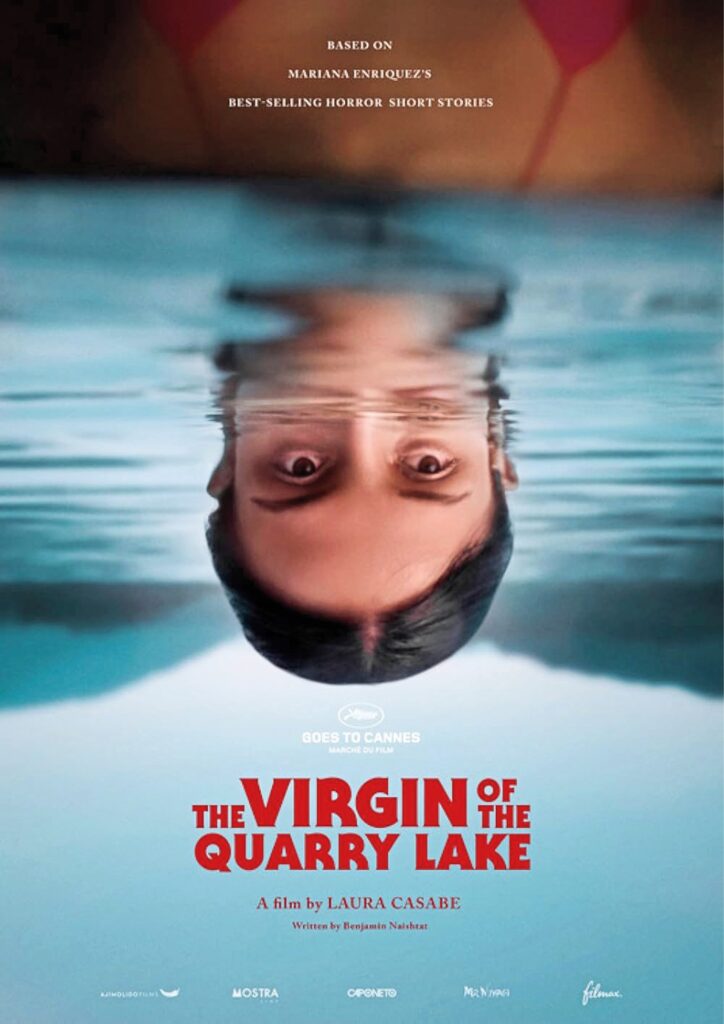This article is adapted from AQ’s special report on China and Latin America
In the West, depictions of female rage have captivated readers and moviegoers alike for a very long time—from Euripides’ Medea all the way to Greta Gerwig’s Barbie. Argentine director Laura Casabé’s recent debut feature, The Virgin of the Quarry Lake, presumably belongs to this age-old tradition, only to deleterious effect. The film, adapted from two short stories by literary powerhouse Mariana Enríquez, offers a culturally uninspired and politically disappointing perspective on women’s bottled-up anger.
Natalia, a moody teenager, lives on the outskirts of Buenos Aires with her grandmother, Rita, though she spends most of her time outdoors with her two best friends, Josefina and Mariela. All three girls are infatuated with their childhood buddy, Diego, with whom they often go swimming.
When Diego starts hanging out with 30-something-year-old Silvia, Natalia’s entire life begins to crumble. Her hatred of this unexpected rival runs so deep that she asks Rita to get rid of her through a spell. After that tactic doesn’t work, Natalia proceeds to waste the rest of her vacation sulking and full of bitterness. Not only does she despise Diego’s new girlfriend, but she also debases her grandmother—and on occasion, her two friends—every chance she gets.
Casabé seems to imply that Natalia’s volatile emotions are justified because of her budding (and thereby uncontrollable) desire. Yet the emergence of a sexual appetite does not give anyone the right to bend another person’s will or, worse, resort to violence, which she later does. The film portrays Natalia as a victim: She is often gasping for breath or crying. But why should viewers sympathize with such a character?
As a backdrop to Natalia’s story, The Virgin of the Quarry Lake is set during the summer of 2001, a notoriously nightmarish year for Argentines. Facing the prospect of a nationwide bank run, the government imposed restrictions on deposits and withdrawals (the so-called corralito), which ultimately led to millions of people losing their savings. Argentina’s peso lost two-thirds of its value, unemployment skyrocketed, businesses closed, and riots spread across the country. Natalia’s summer features many suggestions of this brewing crisis.
Toward the start of the film, she witnesses one of her grandmother’s neighbors beating a homeless man. Later on, she sees a woman perusing through that same homeless man’s abandoned shopping cart, before a car hits and kills her on the spot. All the while, Natalia’s grandmother temporarily adopts Kechu, a young Indigenous boy from a poor background, only to abandon him when his mother dies. These incidents, although extraneous to the main plot, are nevertheless visually arresting (usually due to the presence of blood), and they obviously imply something rotten about Argentine society in that historical moment.
More importantly, there are repeated indications that Natalia might be uniquely attuned to these wrongdoings. She is the only one who observes the woman being killed, for instance. Even so, her responses always land somewhere between indifference and spite, targeted toward her society at large. She clearly finds fault in the adults around her, but she fails to take action by herself. If Natalia symbolizes youth, then the future of Argentina depicted in Casabé’s film is a politically arid one.
When Medea cries that, for women who “have been wrongly treated in the field of sex, / there is no other cast of mind more deadly, none,” the lines resonate with readers because she has actually faced an injury at the hands of her husband, and she is willing to risk everything to get even with him. The supposed offenses suffered by Natalia are imagined rather than real. She hides under the cover of female rage, which only means something when it stands for more than a trendy conceit. Natalia is no Medea.

The Virgin of the Quarry Lake
Directed by Laura Casabé
Screenplay by Benjamin Naishtat
Distributed by Filmax
Argentina, Mexico and Spain








